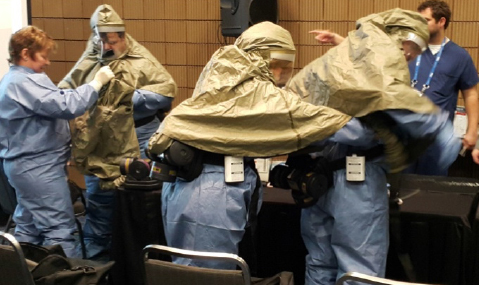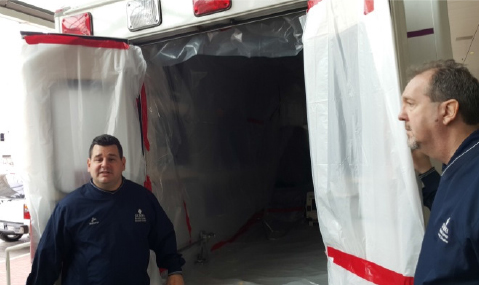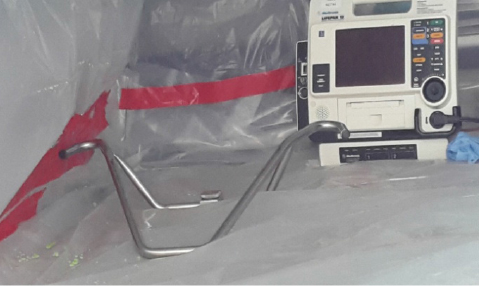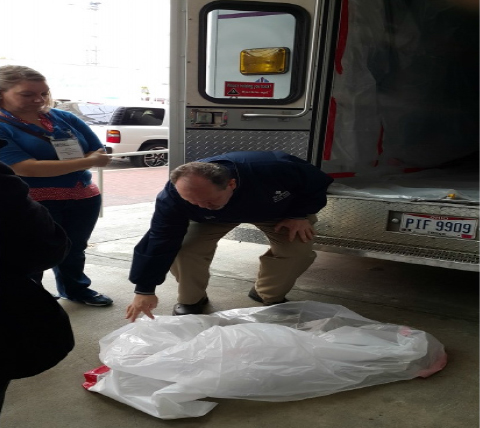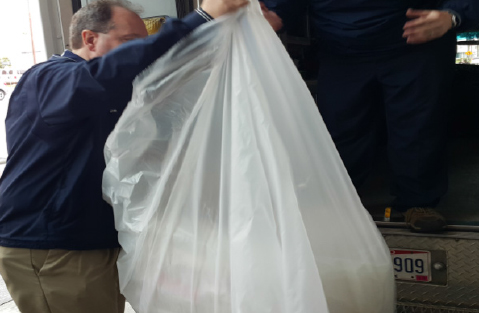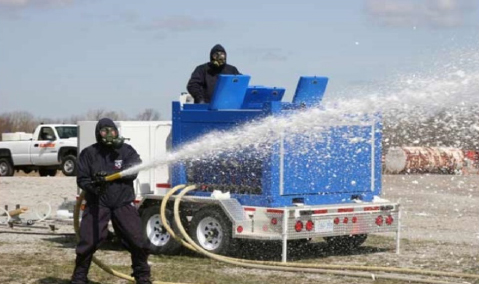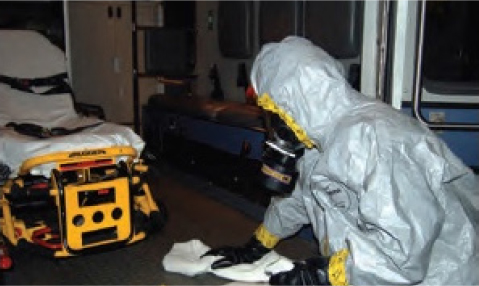Hanyang Med Rev.
2015 Aug;35(3):146-151. 10.7599/hmr.2015.35.3.146.
Prevention and Decontamination of Chemical, Biological, Radiological, and Nuclear Contaminants for the Emergency Medical Personnel during Ambulance Services
- Affiliations
-
- 1Department of Paramedic Science, Korea National University of Transportation, Jeungpyeong, Korea. dmshin@ut.ac.kr
- KMID: 2168360
- DOI: http://doi.org/10.7599/hmr.2015.35.3.146
Abstract
- This paper will review proper protocol for Emergency Medical Technicians (EMTs) between the ambulance station, scene and hospital. EMTs must know how to protect themselves both inside and outside the ambulance from chemical, biological, radiological, and nuclear (CBRN) contaminants in order to provide the best quality care. EMTs should also know how to remove contamination after taking a patient to the hospital. A CBRN protocol at the scene of exposure is the best defense strategy for protecting both EMTs and the emergency ambulance vehicle from contamination. If EMTs and the emergency ambulance vehicle are exposed to CBRN, neither will be of great service as they both play a critical part in the quality of care given to a patient. In the event of possible exposure, EMTs should dress in high perceptibility personal protective equipment (PPE). Those who have been trained prior should arrive to the scene with an air purifying respirator. Before a patient with possible exposure is placed inside an emergency ambulance vehicle, all patients' compartments should be completely covered and sealed with plastic film. Once the emergency medical crew reaches the hospital and the patient is discharged from the emergency vehicle, all plastic film inside the ambulance, from the cockpit ceiling to the floor, should be removed and properly discarded. The patient's clothing and shoes should be placed into a double layered plastic bag. Adhering to proper protocols, within 10 minutes of arrival at hospital, a contaminated ambulance should undergo pre-washing, decontamination and rinsing operations.
MeSH Terms
Figure
Cited by 1 articles
-
Disaster Medicine in Korea
Taeho Lim
Hanyang Med Rev. 2015;35(3):121-123. doi: 10.7599/hmr.2015.35.3.121.
Reference
-
1. CBRN defense [Internet]. Wikipedia, the free encyclopedia;c2015. cited 2015 June 11. Available from: https://en.wikipedia.org/wiki/CBRN_defense/.2. CBRN Filter Fitted Ambulance by OWR [Internet]. Osho defence total security solutions;c2013. cited 2015 June 11. Available from: http://www.oshodefence.com/CBRNA.php/.3. Emergency Preparedness Department. Major Incident Plan. Version 1 Revision 1.3. South Central Ambulance Service NHS Trust;2010. p. 74.4. Borlaug Gwen. Infection Control and Prevention - Standard Precautions: Infection control principles and practices for local health agencies [Internet]. Madison (WI): Wisconsin Department of Health Services;c2015. cited 2015 June 15. Available from: https://www.dhs.wisconsin.gov/ic/precautions.htm/.5. CAPSULS™ Patient Isolation Unit [Internet]. Romeoville (IL): ISOVAC Products LLC;c2014. cited 2015 June 15. Available from: http://www.isovacproducts.com/capsuls.html/.6. CBRN Decontamination Systems. [Internet]. CBRNe Solution;c2015. cited 2015 June 11. Available from: http://cbrnesolution.com/?page_id=369/.7. Bioquell BQ-50 applications [Internet]. Hampshire (UK): Bioquell;c2015. cited 2015 June 5. Available from: http://www.bioquell.com/en-uk/markets/product-selector/bioquell-bq-50/bioquell-bq-50-applications/.8. NHS Professionals. Standard Infection Control Precautions. Clinical Governance. Version 3. Watford (UK): NHS Professionals;2010. p. 1–28.9. Occupational Safety and Health Administration. Report No.: OSHA 3370-11. p. 38, 2009. Best Practices for Protecting EMS Responders during Treatment and Transport of Victims of Hazardous Substance Releases. Washington, DC: US Department of Labor;2009. p. 104.10. Charlottesville-Albemarle Rescue Squad (CARS) [Internet]. Charlottesville (VA): CARS;c2015. cited 2015 June 10. Available from: http://www.rescue1.org/.11. Atkinson S, Ahmed R, Gable B, Gardner AK, Hughes P, Kridler CA, et al. IMMERSIVE COURSE - Bleeding to Blacklights III: High Risk Simulations in Disaster & Infectious Disease. In : The International Meeting on Simulation in Healthcare (IMSH); 2015 Jan 10-Jan 14; New Orleans, Louisiana USA. Washington, DC: The Society for Simulation in Healthcare;2015.


